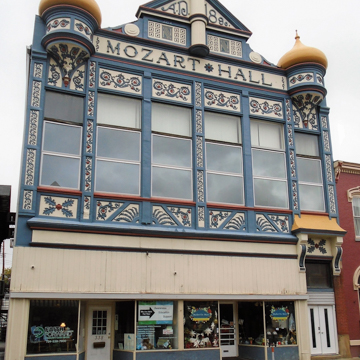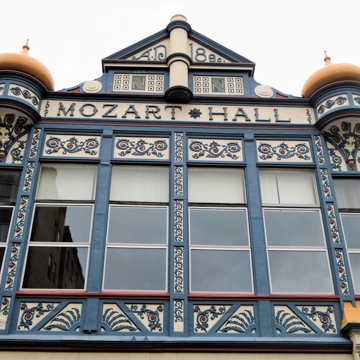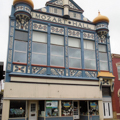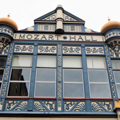You are here
Mozart Restaurant (Mozart Hall)
Mozart Hall's exotically detailed cast-iron facade with two onion-domed turrets is a distinctive contribution to Latrobe's Main Street. George Seiler erected the brick building in 1890 as a music and dance hall. Seiler's European heritage apparently influenced him to build a hall similar to those in Austria, and to name it for Salzburg's native-born musician, Mozart. The brick building was designed with space for two businesses on the first floor and an adjacent entrance to the second-floor concert hall. The hall has a pressed-metal ceiling, stage, and balcony. It was used for musicals and operettas until the Showalter Opera House (demolished) opened on Depot Street.
Writing Credits
If SAH Archipedia has been useful to you, please consider supporting it.
SAH Archipedia tells the story of the United States through its buildings, landscapes, and cities. This freely available resource empowers the public with authoritative knowledge that deepens their understanding and appreciation of the built environment. But the Society of Architectural Historians, which created SAH Archipedia with University of Virginia Press, needs your support to maintain the high-caliber research, writing, photography, cartography, editing, design, and programming that make SAH Archipedia a trusted online resource available to all who value the history of place, heritage tourism, and learning.


















